The Rise of Metcalf South Shopping Center Mall
Metcalf South Shopping Center officially opened its doors in 1967, becoming an integral part of Overland Park, Kansas. Located at the intersection of 95th Street and Metcalf Avenue, the mall was developed by Sherman Dreiseszun and Frank Morgan, who were also responsible for other shopping centers in the Kansas City area.
The mall’s opening was significant for Overland Park, attracting thousands of visitors and instantly becoming a retail landmark.
The mall initially featured many stores, including anchor tenants like Sears and The Jones Store. These anchor stores were pivotal in drawing a large customer base, making the mall a one-stop shopping destination. In addition to retail stores, Metcalf South also offered various dining options and services, making it a versatile space for the community.
In the years following its opening, Metcalf South underwent several expansions and renovations to keep up with consumer demands and trends. For instance, in the 1970s, a new wing was added to accommodate more retail spaces, and the mall’s interior was updated to give it a more modern look.
These changes aimed to enhance the shopping experience and maintain the mall’s status as a premier shopping destination in Overland Park.
However, despite its initial success and subsequent expansions, Metcalf South couldn’t escape the challenges that would eventually lead to its decline. The 1980s and 1990s saw a surge in competition as new shopping centers and big-box retailers emerged nearby.
While Metcalf South held its own for several years, the changing retail landscape began to take its toll, setting the stage for the mall’s eventual decline and closure in 2014.
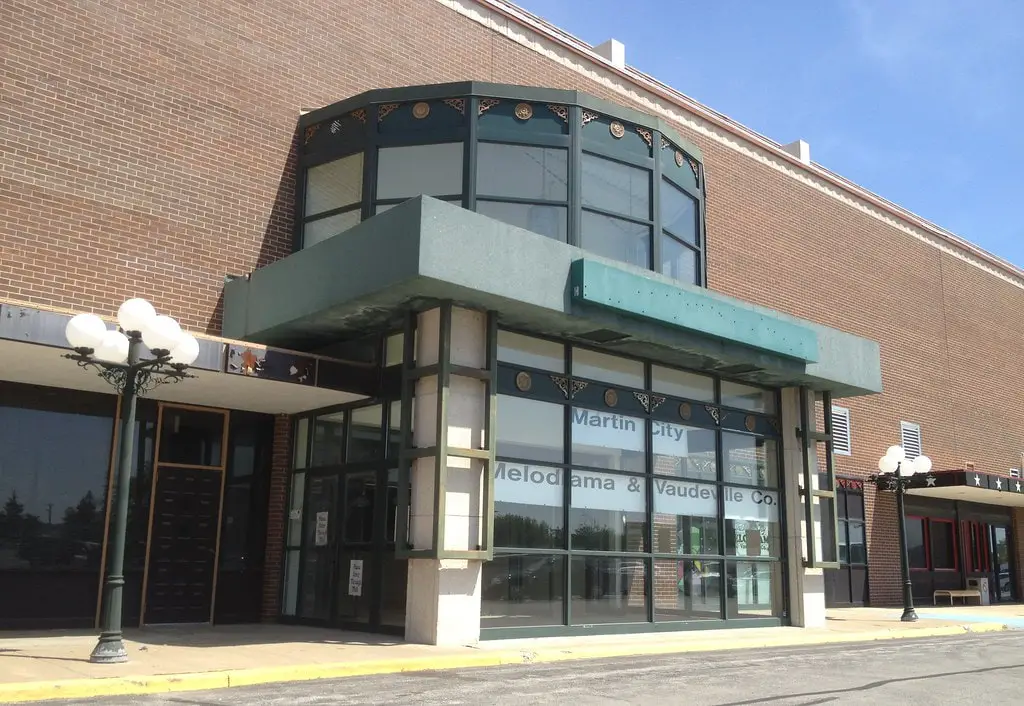
Architectural Highlights and Unique Features
Metcalf South Shopping Center was not just another shopping center but an architectural marvel of its time. The layout was designed to facilitate easy navigation, with wide corridors and strategically placed stores. The center’s architecture blended modern and traditional elements, creating a welcoming atmosphere for shoppers.
One of the most striking features of Metcalf South was its fountains. These water features added an aesthetic appeal to the mall, making it more than just a place to shop. Sculptures and art installations were also part of the center’s unique design, contributing to its distinct identity.
The architecture and design elements were not merely for show but crucial in enhancing the shopping experience. The layout was planned to maximize store visibility, encouraging foot traffic and making it easier for shoppers to find what they were looking for.
Despite its architectural brilliance, the mall couldn’t escape the inevitable changes that came with time. As newer shopping centers with more modern amenities began, Metcalf South showed its age. The once state-of-the-art features now seemed dated, contributing to the mall’s decline.
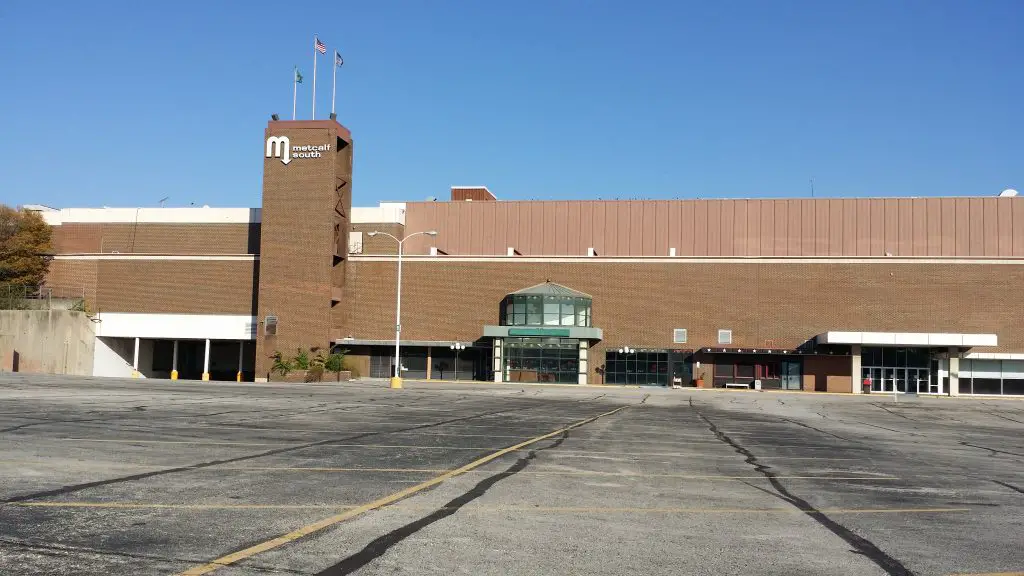
Economic Challenges and Decline
The decline of Metcalf South Shopping Center was not an overnight occurrence but a gradual process marked by specific events and economic shifts. One of the first signs of trouble came in the late 1990s when several smaller stores began to shutter their doors. This was followed by the departure of one of its anchor tenants, The Jones Store, in 2002, leaving a significant void in the mall’s retail offerings.
The emergence of larger, more modern shopping centers in the vicinity in the late 1990s posed stiff competition. The early 2000s saw the rise of e-commerce platforms like Amazon, which began to draw customers away from traditional brick-and-mortar stores.
This shift in consumer behavior directly impacted Metcalf South’s foot traffic and overall sales. By 2008, the mall was operating at just 40% occupancy, starkly contrasting to its bustling days in the late 20th century.
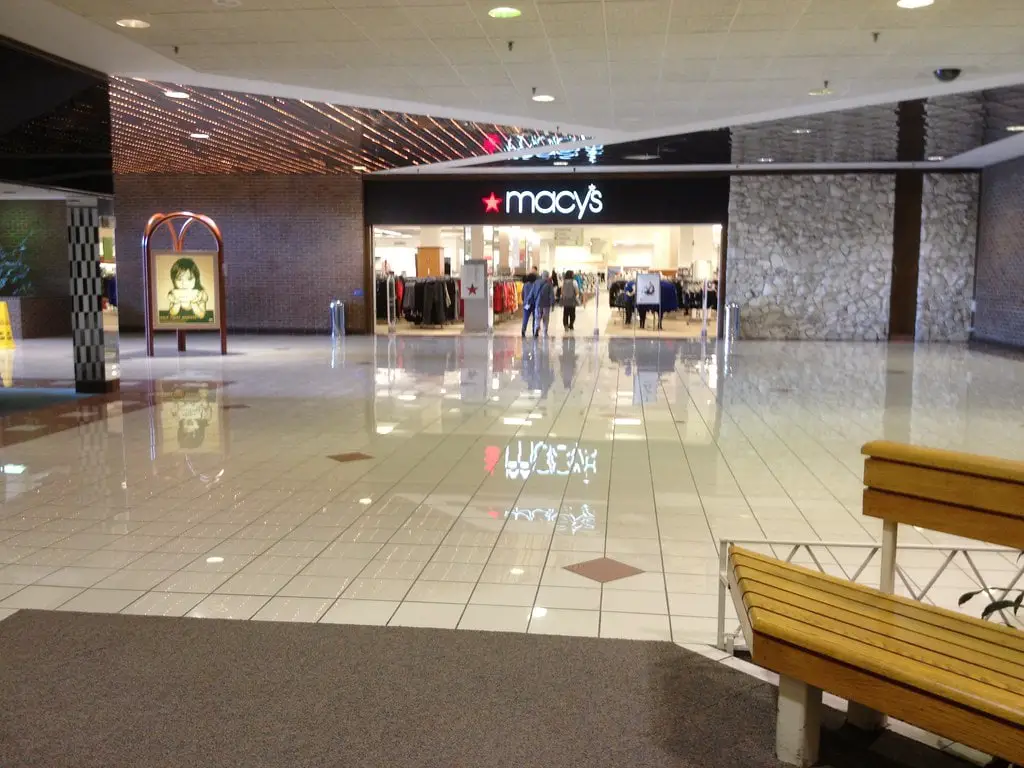
In 2014, the mall faced its final blow when it officially closed to the public. At its closure, only a handful of stores remained operational, and the mall’s corridors, once filled with shoppers, were eerily quiet. The closure led to a loss of jobs and a ripple effect on surrounding businesses, contributing to a decline in the area’s economic vitality.
The mall’s closure was not just a local event but part of a more significant national trend known as the “retail apocalypse,” characterized by the decline of many brick-and-mortar retail spaces. For Metcalf South, this meant the end of an era, as the mall that had once been a cornerstone of Overland Park’s community and economy was now a relic of the past.
The Sears Saga and Demolition
One of the last remnants of Metcalf South was the Sears building, a structure that stood as a testament to the mall’s former glory. For years, Sears was one of the anchor stores that attracted shoppers to the center. However, Sears couldn’t escape the changing retail landscape like the mall.
Sears closed in September 2017, and in 2022, demolition activities began, signaling the end of the Sears building. The demolition was part of a larger plan to make way for new developments, including restaurants, an office building, and a daycare center.
The demolition of the Sears building was met with mixed reactions from the community. While some saw it as a necessary step towards progress, others felt it was the erasure of a piece of local history. The demolition marked a significant milestone in transforming the Metcalf South site.
As the dust settled, the community was left to ponder what would come next. The demolition made way for new opportunities but closed the chapter on a significant part of Overland Park’s history. Like the mall it was a part of, the Sears building would now live on only in the memories of those who frequented it.
From Mall to Mixed-Use: The Evolution of Metcalf South
The Metcalf South Shopping Center has undergone significant changes over the years, and one of the most notable transformations is its conversion of the area into a mixed-use development. The part of the site has been repurposed for Novel Place Senior Living, and the Lowe’s Home Improvement store was another significant addition.
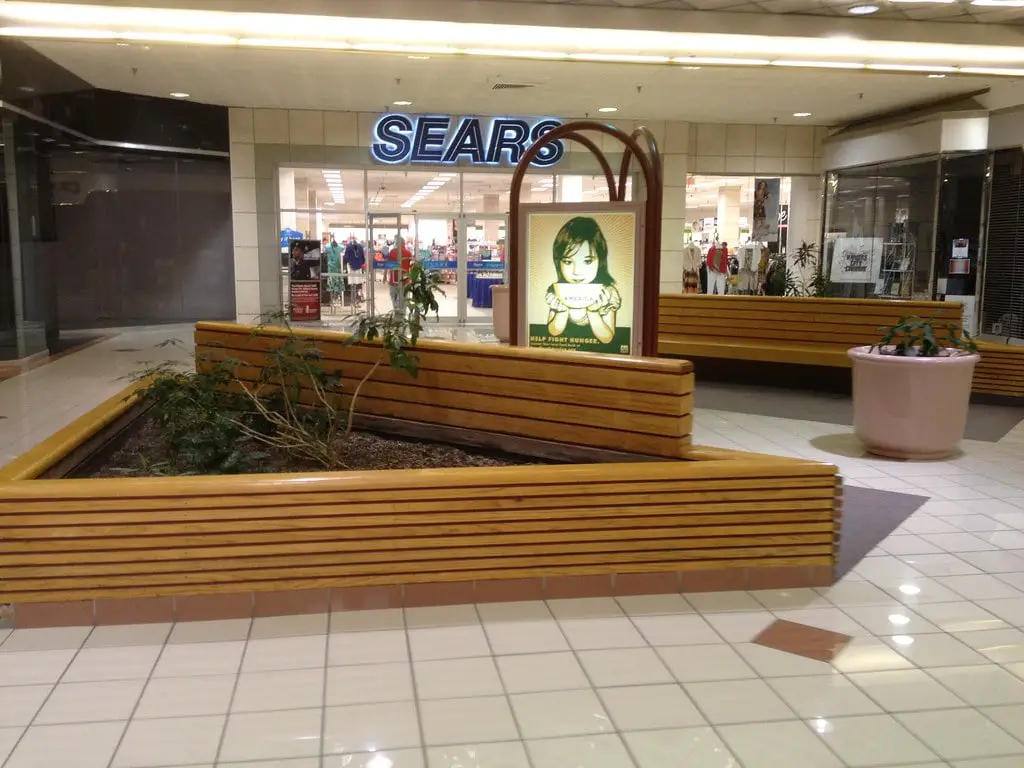
In 2016, LANE4 Property Group and The Kroenke Group unveiled plans to replace the defunct mall with 294,000 square feet of retail space, anchored by Lowe’s. The Overland Park City Council approved this $80 million redevelopment project, signaling a new era for the once-vibrant shopping center.
The Lowe’s store opened in 2018, offering more than 120,000 square feet of retail space and an adjacent garden center of nearly 32,000 square feet. This development revitalized the area and created approximately 125 jobs in the community.
The Lowe’s store is strategically located across the street from its rival, Home Depot, making it a key player in the local retail landscape. The store’s opening marked a significant milestone in the area’s redevelopment, breathing new life into a site that had lost nearly all of its tenants over the past two decades. For residents who remember the old mall, the Lowe’s store represents both a nostalgic end and a hopeful beginning.
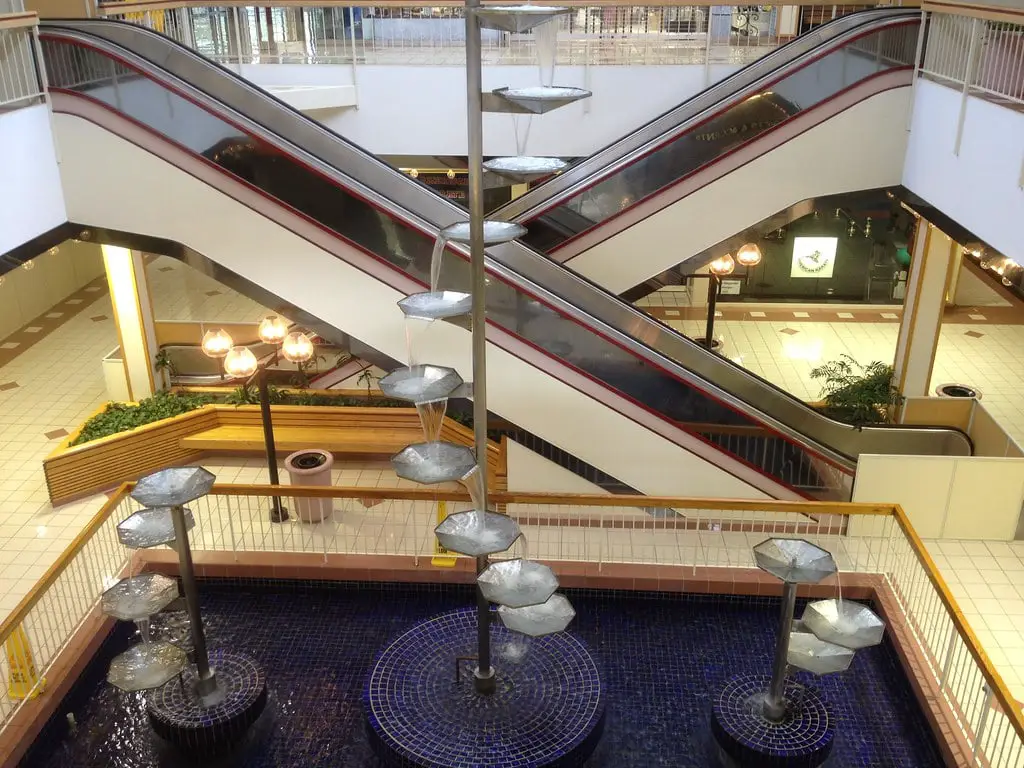
Another transformative element in the Metcalf South site’s redevelopment is Novel Place Senior Living. It aims to offer a comfortable and convenient lifestyle for those 55 and above.
The facility provides a range of amenities, including dining, light housekeeping, transportation, and community activities. The senior living community was voted a top-rated facility, recognizing it among the top 2-3% of senior service providers in the United States.
Novel Place Senior Living is not just another senior facility; it’s a symbol of how the Metcalf South site has adapted to the changing needs of the Overland Park community. The facility offers various floor plans and home amenities, making it a versatile living option for seniors. It has become a significant part of the area’s landscape, transforming the site from a retail hub to a mixed-use development.
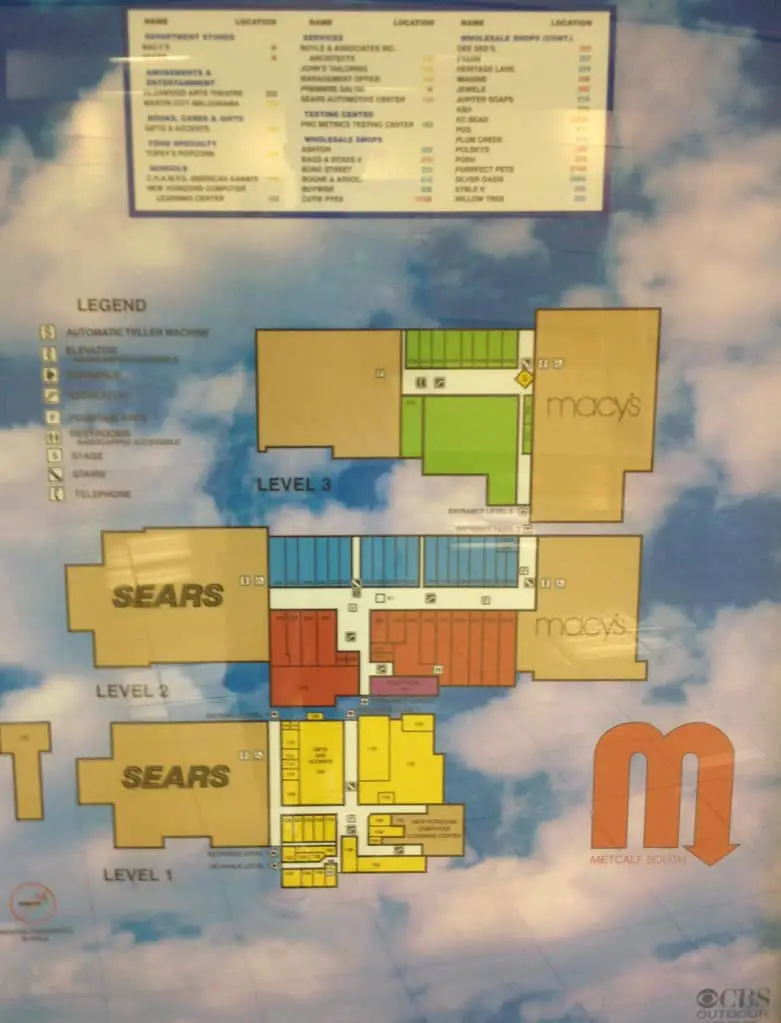
The Future of the Metcalf South Site
While a part of the Metcalf South site has been transformed, the rest of the area near 97th and Metcalf Avenue is slated for further development. Plans include a mix of commercial and residential spaces to revitalize the area.
The community has shown keen interest in the site’s future, with many residents expressing their hopes and concerns. The redevelopment plans have the potential to significantly impact the local economy, bringing in new businesses and creating job opportunities.
However, the transformation also raises questions about the preservation of local history. As new structures rise, the memories of Metcalf South fade further into the background. Yet, the site’s redevelopment offers a chance for a new generation to create their memories, just as their predecessors did.
As of September 2023, the future of the Metcalf South site remains a topic of active discussion among residents. While the plans promise economic growth and development, they also signify the end of an era. Once a bustling shopping center, the site is now a canvas for new opportunities, awaiting the next chapter in its storied history.
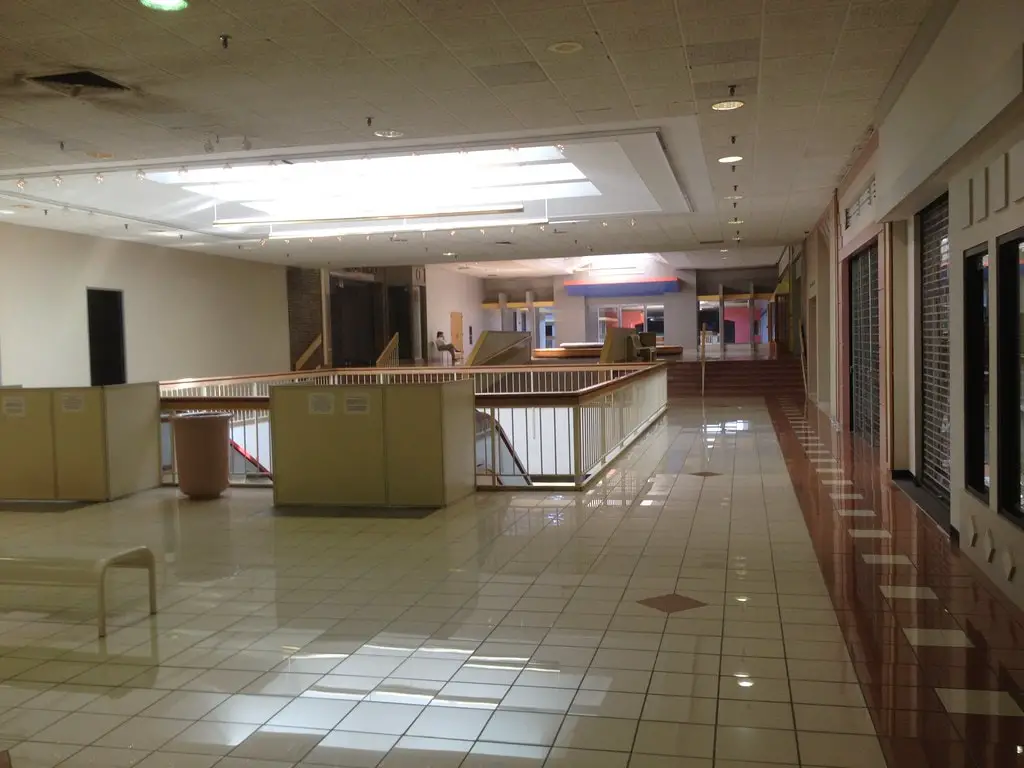
Nostalgia and Cultural Impact
Metcalf South may be gone, but it is far from forgotten. The shopping center lives on through photographs, social media posts, and the memories of those who frequented it. Local historians and photographers have documented the center, capturing its essence for posterity.
The mall holds a special place in the hearts of Overland Park residents. For many, it was more than just a shopping center; it was a part of their identity, a place that shaped their lives in more ways than one. The cultural impact of Metcalf South extends beyond its physical structure, residing in the community’s collective memory.
While the mall no longer exists, its influence can still be felt. The stories, experiences, and memories associated with Metcalf South continue to be a part of Overland Park’s cultural fabric. In a way, the mall has achieved immortality, living on through the people it touched.

Conclusion
The story of Metcalf South Shopping Center is a tale of rise, decline, and transformation. From its heyday as a bustling retail hub to its eventual closure, the mall has been a significant part of Overland Park’s history.
The legacy of Metcalf South is not just in its physical structure but in the memories it has created. As the community looks forward to new developments, there’s a sense of nostalgia for what was lost. Yet, in the ever-changing landscape of Overland Park, one thing remains constant: the indelible impact of Metcalf South on the lives of its residents.
The transformation of the Metcalf South site is a testament to the evolving needs and aspirations of Overland Park. While the mall may be a thing of the past, its spirit lives on, reminding us of the importance of community, history, and the places that bring it together.

